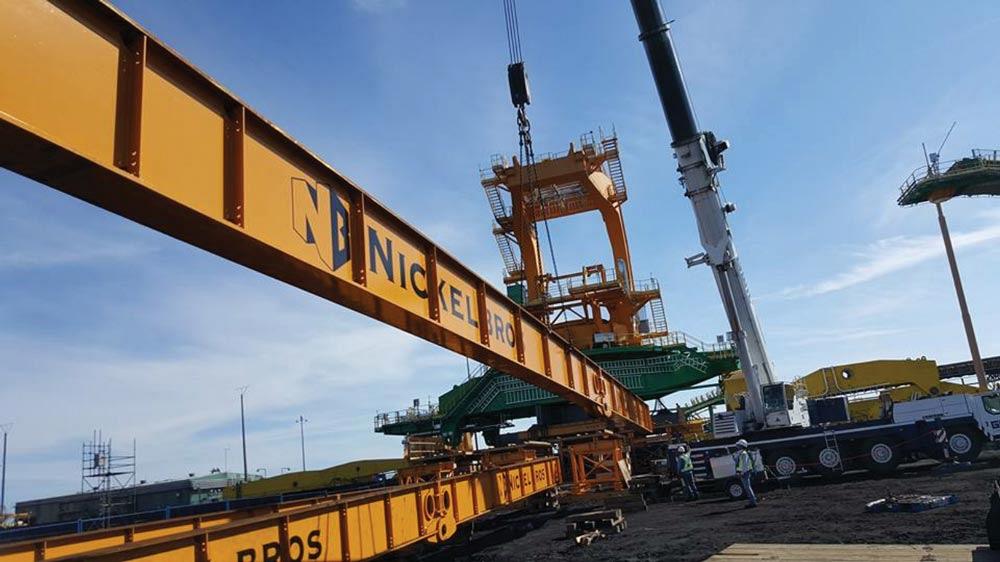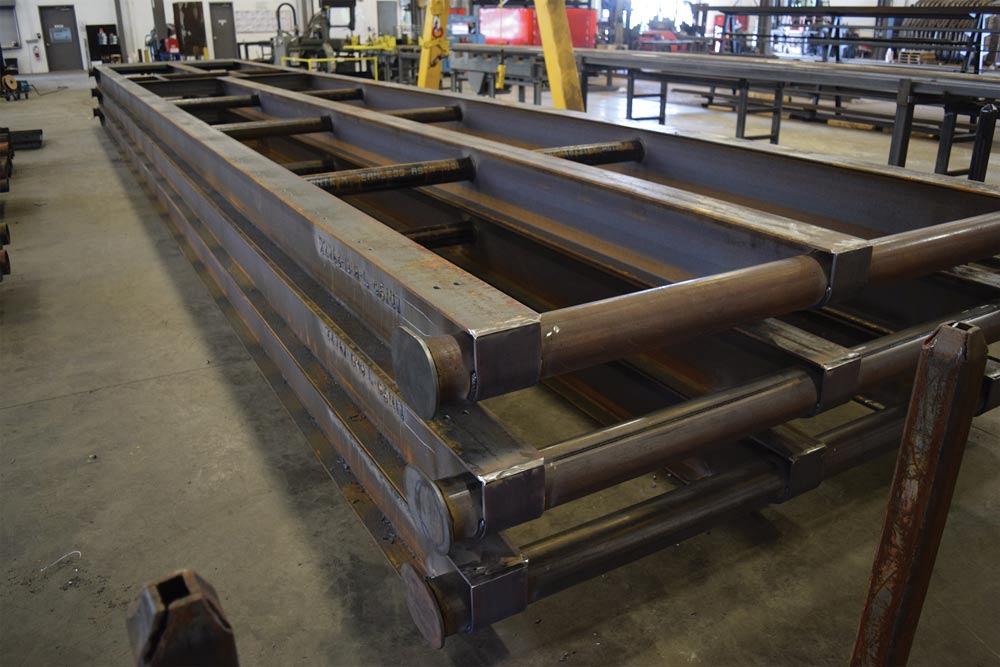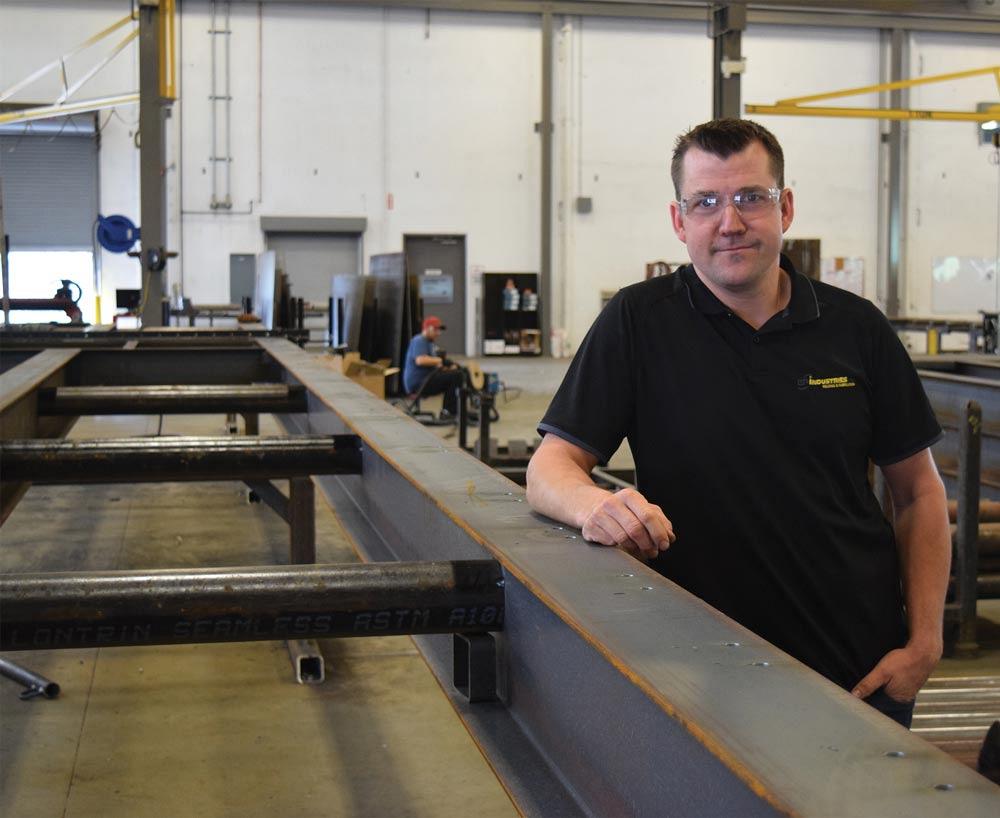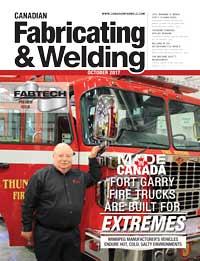Editor
- FMA
- The Fabricator
- FABTECH
- Canadian Metalworking
EP Industries’ process management advantage
Chilliwack shop prides itself on creating cost efficiencies in heavy fabrication jobs
- By Rob Colman
- October 31, 2017
- Article
- Fabricating
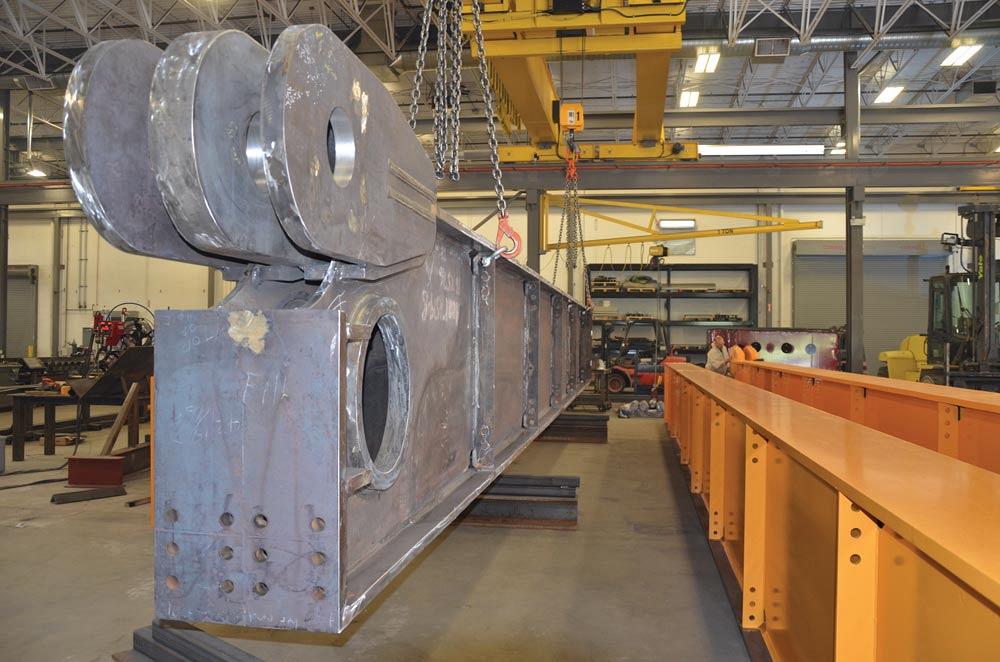
Constructing 33,000-lb. beams at EP Industries used to move bucket wheels for unloading coal. Image courtesty of EP Industries.
EP Industries Ltd. is a Chilliwack, B.C.-based fabrication company that built its reputation over the past 10 years manufacturing steel skids and platforms. As the market need for those products has changed, founder Earl Pauls is finding ways to use the skills developed in that sector to meet a broader set of needs in the large-scale fabricating and welding market.
Barn Building
Pauls started his fabricating business in a barn on the property of his parents’ chicken farm in 1999.
“I started off building indestructible mail boxes,” said Pauls. “That was my first big product line. I started making Bobcat buckets for local farmers and it just grew from there.”
It was in 2008, at the global petroleum show in Calgary, that Pauls saw the opportunity in the modular building industry. He left that show having met valuable future customers.
“I’d seen skids used in the petroleum industry and saw how my abilities made them a worthwhile product possibility,” said Pauls. “It’s essentially beam and pipe, and a modular building goes on top of it. There are light skids and heavy skids, and they can go from really short to 70 ft. long.”
At full tilt, EP Industries was one of the largest beam purchasers in the valley, processing 50,000 lbs. a day. Pauls had the processing down to a science, shifting a skid into the company’s paint booth every 45 minutes.
Equipped to Move
A few things made EP so efficient at pumping out skids. One was the purchase of a building that could accommodate the handling of very large parts. Pauls moved from the 10,000-sq.-ft. family barn to a custom-built 23,000-sq.-ft. facility equipped with cranes that span 90 ft. in double 10-ton spaces.
The shop is also equipped with a Duroair paint booth that opens like an accordion so that operators can load the part into the space from above and then roll the “booth” into place around it. “We needed a massive paint booth, or a solution that could mimic a massive paint booth, to process parts quickly using an oil-based paint. The amount of square footage this enclosure design saves us is amazing,” said Pauls.
In addition, Pauls purchased a Marvel 2150A-PC3S vertical tilt-frame band saw from All Fabrication Machinery. Its nominal capacity is 20 in. by 25 in., 20 in. round. Cutting at 45 degrees, the saw has a capacity of 20 in. by 17 in., 17 in. round; at 60 degrees, it is 20 in. by 11.25 in., 11.25 in. round.
“It’s quite a large saw, with a 4-ft. shuttle,” said Pauls. “We can put great bundles of beam through it without breaking the bundle apart. Its double mitre was a really big feature for our work.”
The saw can mitre cut up to 60 degrees left and right of vertical. The automatic bar feed design features a 48-in. stroke length with indexing speeds of up to 60 ft. per min. and creep speeds of 33 IPM. The control includes a memory for up to 500 jobs and parts, as well as a material selection chart and customizable material library. Both blade speed and feed force are automatically set according to material type. Job programming consists of setting the cut-off length, angle, and number of pieces to be cut.
Beyond purchased equipment, Pauls also built other equipment from the ground up to suit how he wants to operate. For instance, he built his own plasma cutting table because those on the market didn’t quite fit his ideal specifications.
Process Management Advantages
It’s that kind of DIY ingenuity in Pauls and his team that really drives the success of the shop. And it extends well beyond building machinery. As Pauls describes it, success is all about process management.
“Pretty much every shop has a specialty item it produces,” he explained. “For many shops, their entire goal is to build one product really well. For us, although we’ve become excellent at building skids quickly and efficiently, I don’t really care what we’re building; I’m all about the front-end process.
“I do most of my thinking in the office, planning and preparing jigs,” he continued. “Everything’s about jigs and processes to make production smooth from the first part to the last. With the skids, for instance, we thought through the whole process so that, although our line didn’t look like much when we started, all the variables were taken out before material hit the floor so that you hardly needed a tape measure to build a skid. Every time an employee has to pick up a measuring tool on the floor, that’s time wasted. If you can eliminate that step so that you just have to put the parts in place and start welding in a way that’s difficult to mess up, all that front-end work is where you make profit.”
The jig design Pauls put in place meant that EP Industries’ team could place a beam within 1/16 in. of where it needed to be every time; in 15 minutes a skid could be tacked together.
“Other people might buy automated welding equipment to trim away all the small variables, whereas if you take all the more substantial variables out at the beginning, you can move faster,” said Pauls.
What this means for EP Industries’ customers is shorter lead times on large projects, with cost efficiencies built in.
New Opportunities
EP Industries has started to apply its process management advantage to other large jobs. For instance, the company recently did a job for an industrial moving company to produce large beams to move bucket wheels for unloading coal. The six beams Pauls’ team built were 33,000 lbs. apiece, with some 4-in. plate sections involved, all made with specialty materials.
“This is the sort of job we’re perfectly set up for – heavy industrial work where companies are looking for cost efficiencies,” said Pauls.
Editor Robert Colman can be reached at rcolman@canadianfabweld.com.
EP Industries Ltd., 604-402-0058, www.ep-industries.comAbout the Author

Rob Colman
1154 Warden Avenue
Toronto, M1R 0A1 Canada
905-235-0471
Robert Colman has worked as a writer and editor for more than 25 years, covering the needs of a variety of trades. He has been dedicated to the metalworking industry for the past 13 years, serving as editor for Metalworking Production & Purchasing (MP&P) and, since January 2016, the editor of Canadian Fabricating & Welding. He graduated with a B.A. degree from McGill University and a Master’s degree from UBC.
subscribe now


Keep up to date with the latest news, events, and technology for all things metal from our pair of monthly magazines written specifically for Canadian manufacturers!
Start Your Free Subscription- Trending Articles
CWB Group launches full-cycle assessment and training program

Achieving success with mechanized plasma cutting

3D laser tube cutting system available in 3, 4, or 5 kW

Brushless copper tubing cutter adjusts to ODs up to 2-1/8 in.

Welding system features four advanced MIG/MAG WeldModes
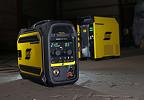
- Industry Events
MME Winnipeg
- April 30, 2024
- Winnipeg, ON Canada
CTMA Economic Uncertainty: Helping You Navigate Windsor Seminar
- April 30, 2024
- Windsor, ON Canada
CTMA Economic Uncertainty: Helping You Navigate Kitchener Seminar
- May 2, 2024
- Kitchener, ON Canada
Automate 2024
- May 6 - 9, 2024
- Chicago, IL
ANCA Open House
- May 7 - 8, 2024
- Wixom, MI













